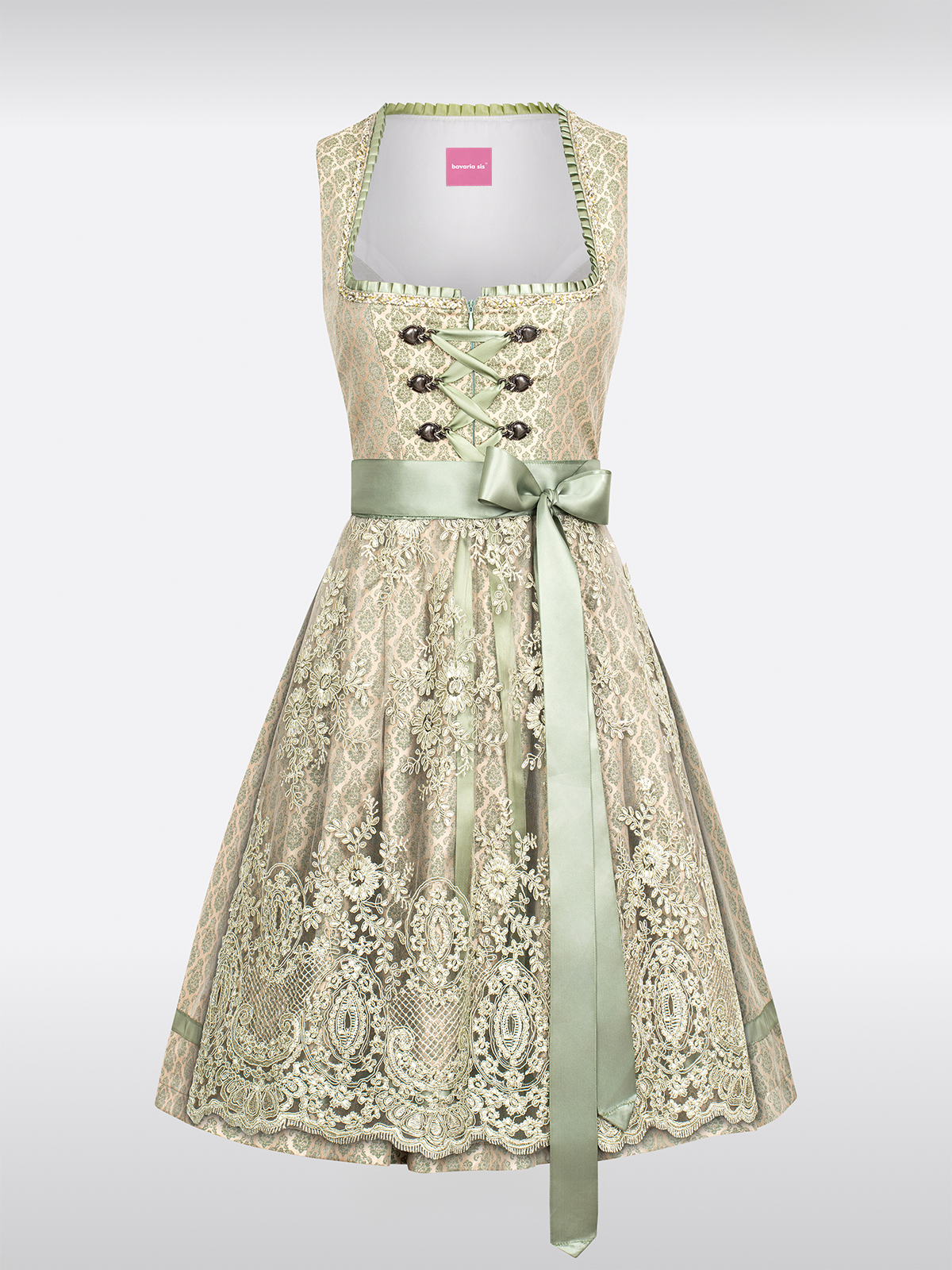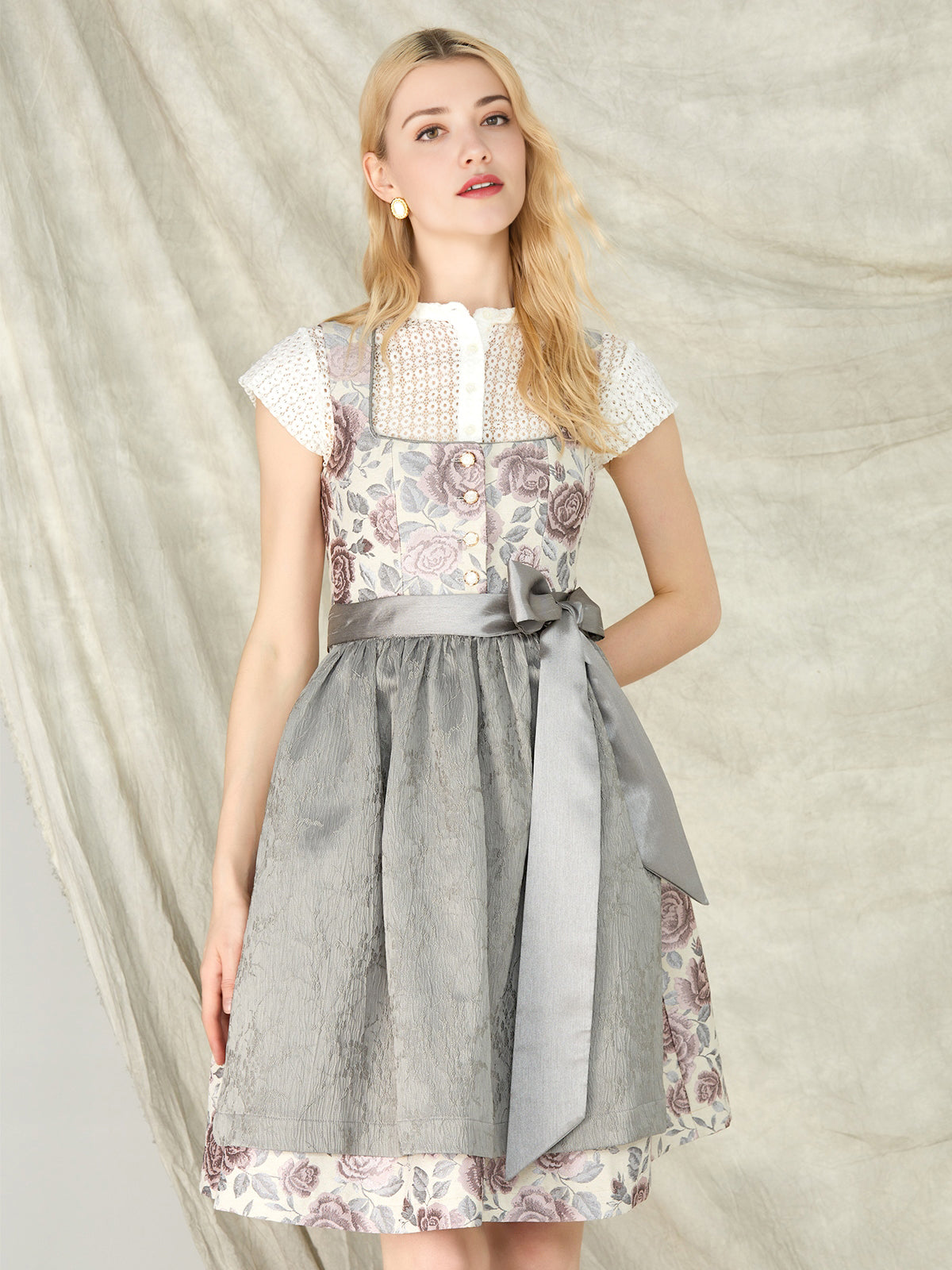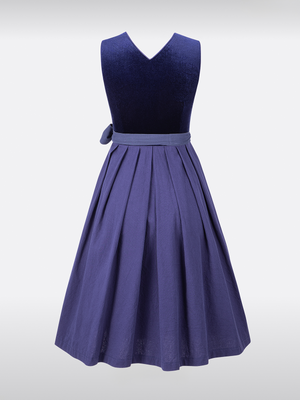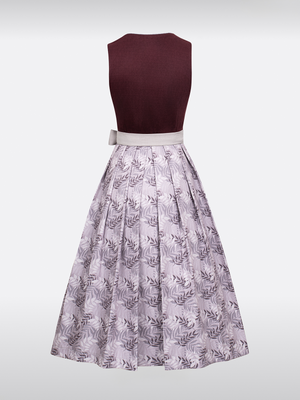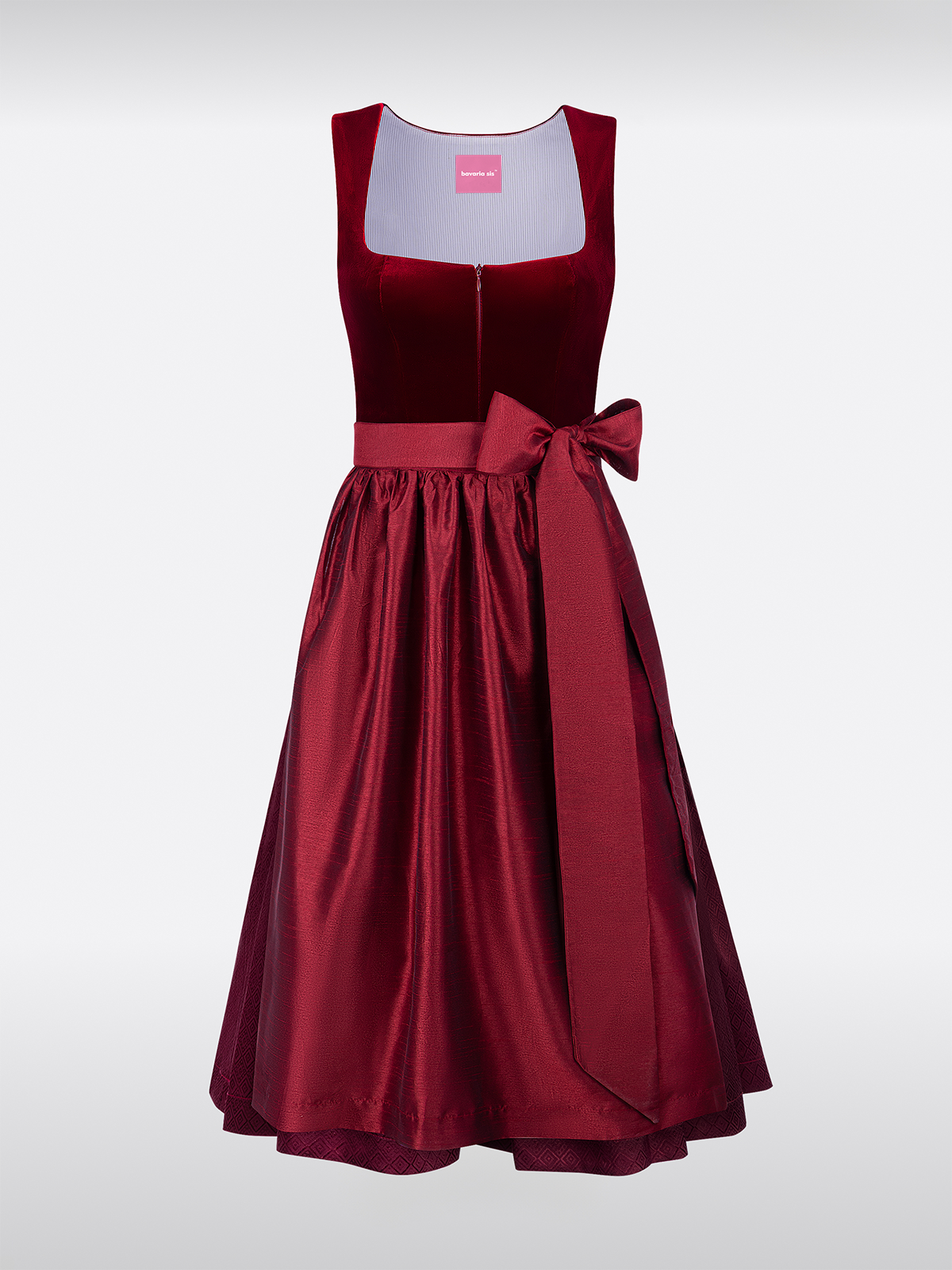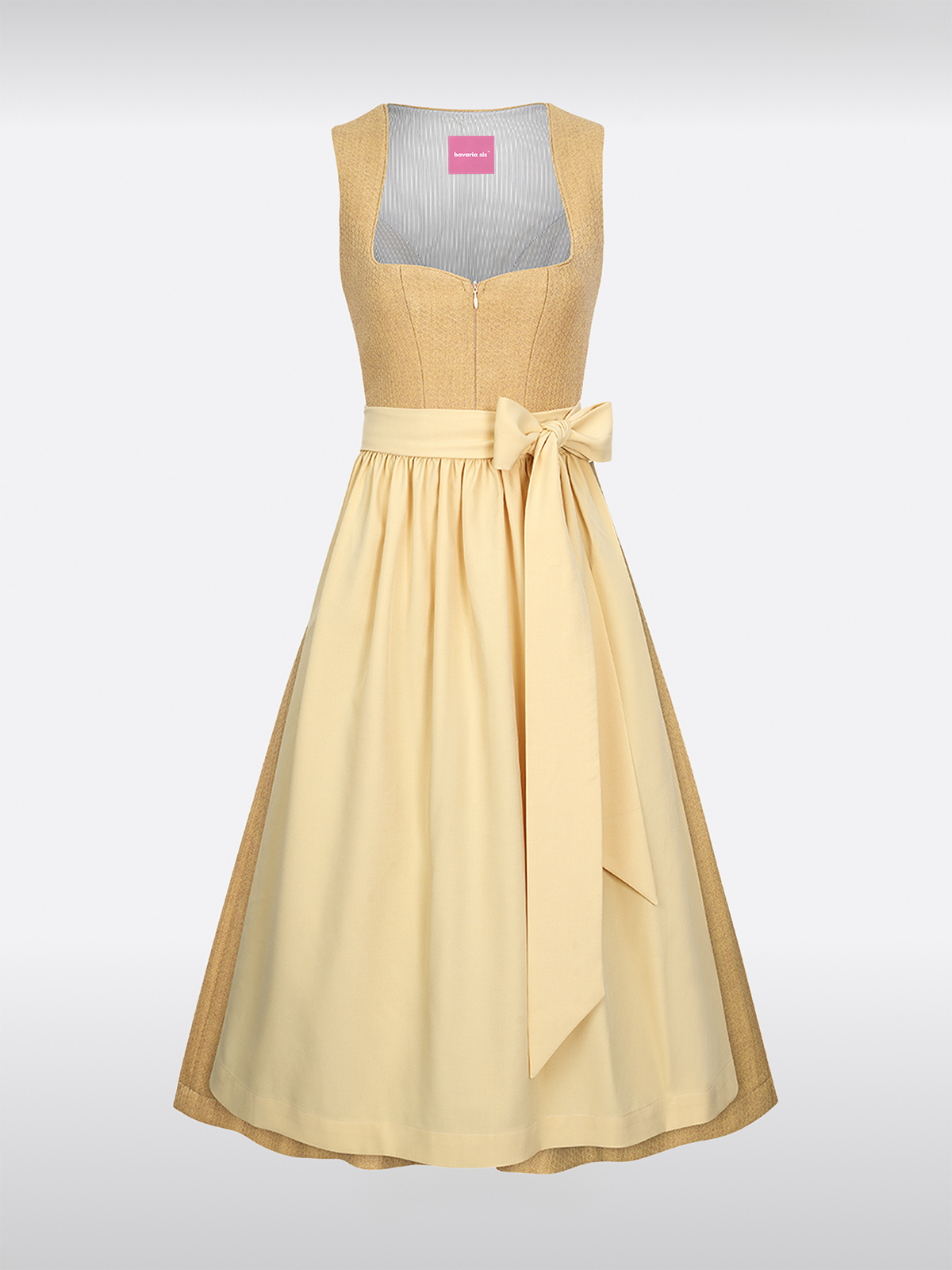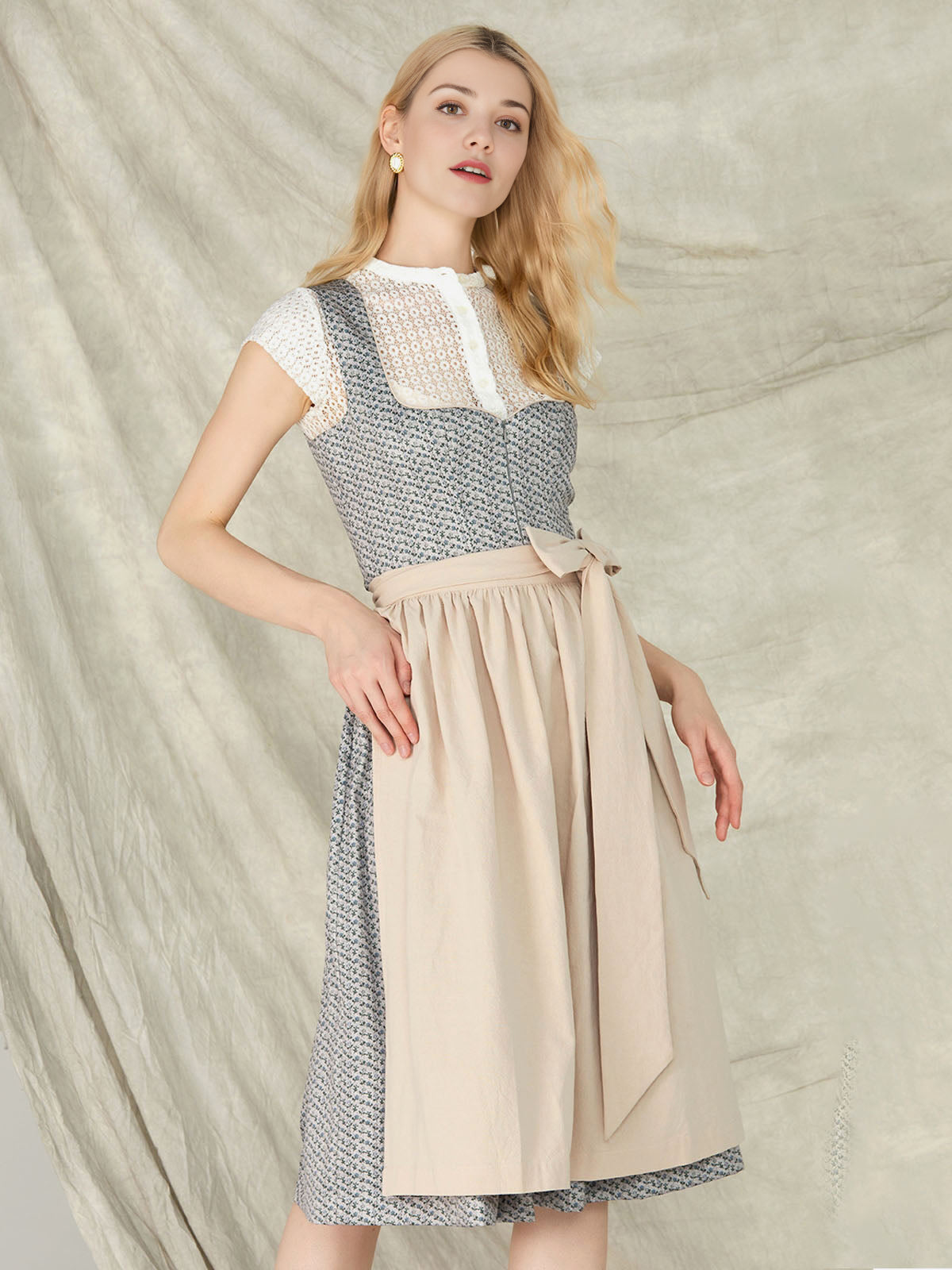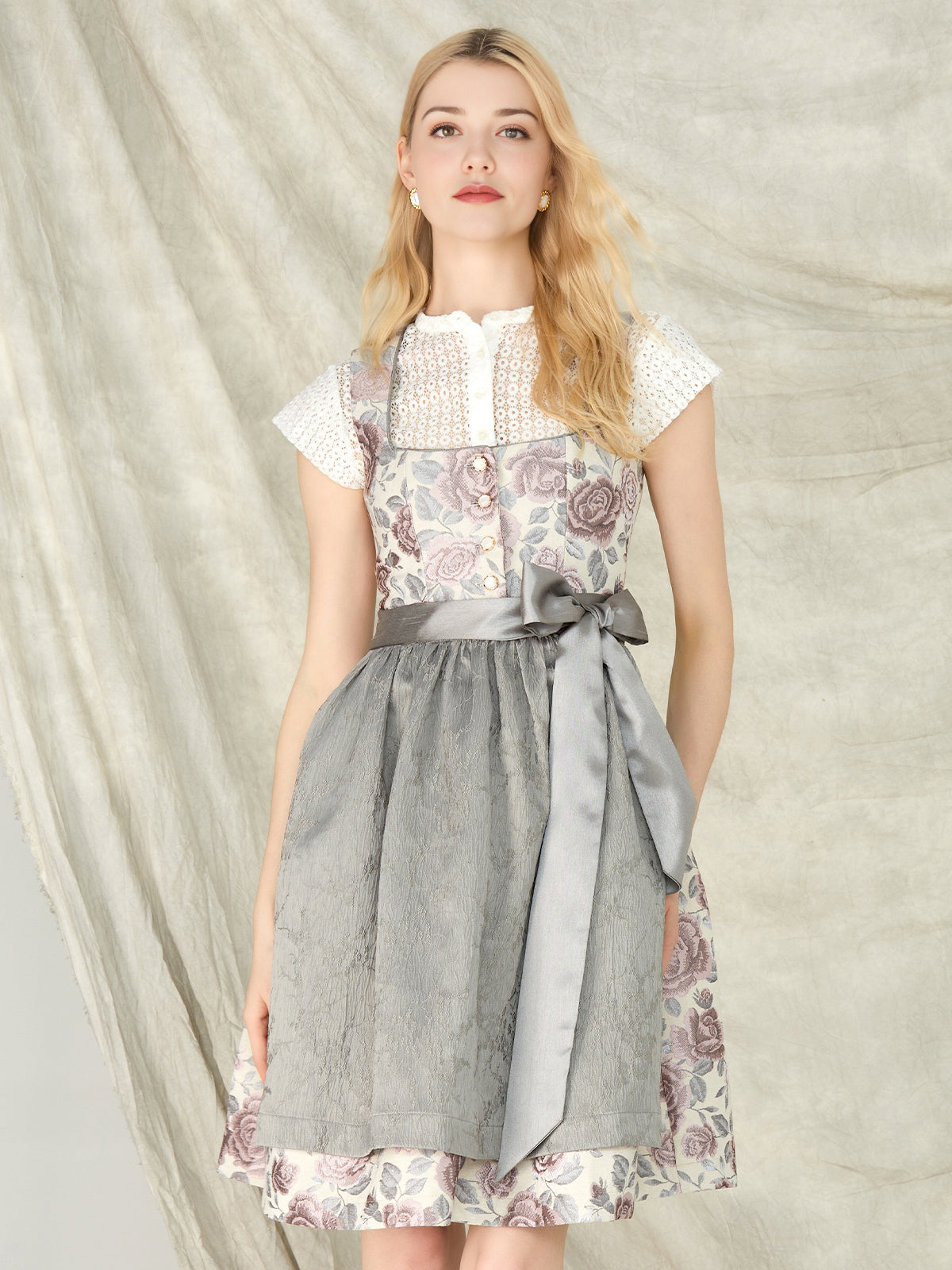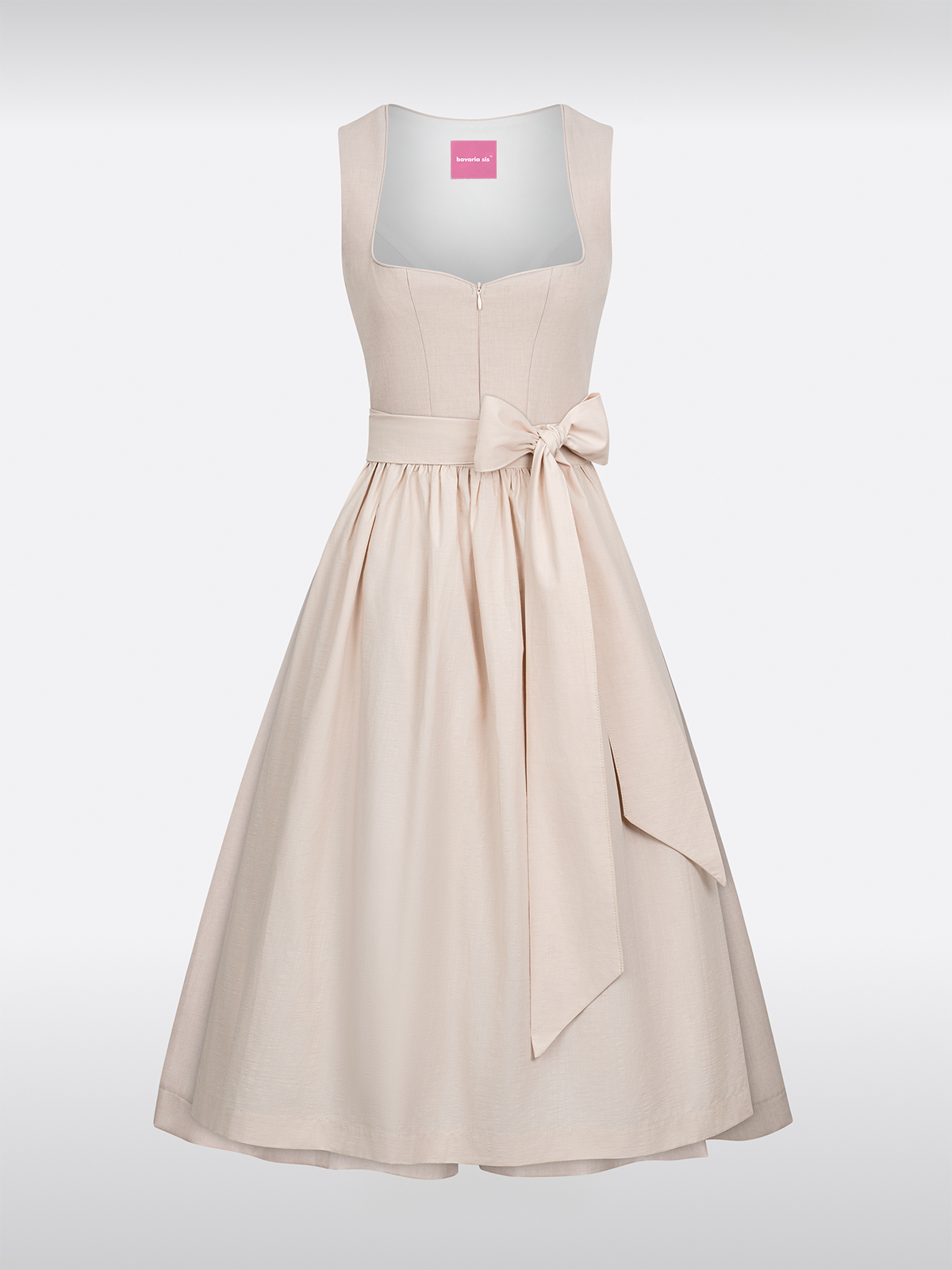The history of the Dirndl
The dirndl has its roots in 19th-century peasant clothing. Originally, it was functional workwear for peasant women, consisting of a top, a skirt, and an apron tie. Over time, the dirndl developed into a symbol of Bavarian culture and was increasingly worn for celebrations and festivals. Today, the dirndl is an international fashion phenomenon, appreciated by people of all ages and cultures.
The basic elements of a dirndl
A classic dirndl consists of three main parts: the top (blouse), the skirt, and the apron belt. The top is often made of linen or silk and typically has a tight fit and fine lace or ribbons. The skirt is usually made of cotton or velvet and can be either rounded or gathered. The apron belt is placed around the waist and serves both as decoration and as a holder for the top.
The top
The top is the central component of a dirndl and can be found in various styles and colors. Some of the most popular top variations are:
- The open top: This is the classic Dirndl top, which is open at the front and can be fastened with a ribbon or buttons. It often reveals part of the chest and is ideal for summer parties and warm days.
- The closed top: A closed top is more suitable for colder seasons or for a more discreet look. It typically has a collar and can be combined with a scarf or bandana.
- The top with laceLace is a popular decorative element on dirndl tops. It adds a romantic and feminine touch to the costume and can be found in various patterns and shapes.
The skirt
The skirt is another important part of a dirndl and can also vary in different styles and colors. Some of the most popular skirt variations are:
- The rounded skirtA rounded skirt has a soft, flowing shape and is ideal for a feminine and elegant look. It's suitable for both formal and everyday situations.
- The tasselled skirtA tasselled skirt has front pockets and is slightly more practical than a rounded skirt. It's ideal for activities where you need some space for small items.
- The miniskirtThe mini skirt is a modern take on the dirndl skirt and is ideal for a young and trendy look. It can be combined with high-heeled boots and a cool jacket for a more edgy outfit.
The apron ribbon
The apron ribbon is not just a decorative addition, but also an important element that enhances the dirndl's silhouette. It is placed around the waist and can be found in various styles and colors. Some of the most popular apron ribbon variations are:
- The wide apron ribbonA wide apron tie adds a dramatic and elegant touch to the costume. It's ideal for celebrations and formal occasions.
- The thin apron ribbonA thin apron tie is more suitable for a lighter and less formal look. It can be found in various patterns and colors and is ideal for everyday situations.
- The decorative apron ribbon: A decorative apron ribbon can be decorated with beads, clasps or other decorative elements and gives the costume a personal touch.
The trends in dirndl fashion
The dirndl has experienced various trends in recent years, combining both tradition and modernity. Some of the current trends in dirndl fashion include:
- The color palette: In addition to classic colors like red, blue, and black, brighter and more colorful colors like pink, yellow, and turquoise have recently been used in dirndl designs. This gives the costume a fresh and modern touch.
- The materials: Traditionally Dirndl made of cotton, linen, or velvet. However, more recently, modern materials such as polyester and spandex have been used to give the costume more flexibility and comfort.
- The decorationsLace, ribbons, beads, and other decorative elements remain popular on dirndl tops and apron strings. Recently, however, other decorations such as patches, embroidery, and quilting have also been used to add a personal touch to the costume.
Tips for the perfect dirndl combination
To create the perfect dirndl outfit, you should follow a few tips:
- Choose the right sizeA dirndl should fit snugly, but not so tight that it becomes uncomfortable. Make sure you choose the right size to achieve a good silhouette.
- Combine the colors: Choose colors that work well together and coordinate. You can either choose a classic color palette like red and black or experiment with brighter and more colorful colors.
- Use accessoriesAccessories such as shoes, jewelry, bags, and hats can add a personal touch to your dirndl outfit. Choose accessories that complement the costume and enhance its look.
- Think about the situationConsider the occasion you want to wear the dirndl for. If it's a special occasion, you can wear a formal dirndl with a wide apron tie and elegant jewelry. If it's a more everyday occasion, you can wear a less formal dirndl with a thin apron tie and simple jewelry.
Inspirations for different occasions
The dirndl is a versatile costume suitable for a variety of occasions. Here are some inspirations for different occasions:
- OktoberfestOktoberfest is the most important event where dirndls are worn. Choose a traditional dirndl in classic colors like red, blue, or black and pair it with a wide apron tie and lederhosen jewelry.
- Summer FestivalA summer festival is the perfect occasion to wear a brighter and more colorful dirndl. Choose a dirndl in a fresh color like pink, yellow, or turquoise and pair it with a thin apron tie and simple jewelry.
- Formal event: For a formal event, you can choose a elegant dirndl Wear it in a dark shade like black or blue. Combine it with a wide apron tie and fine jewelry like pearls or diamonds.
- Daily situationFor everyday wear, you can wear a less formal dirndl in a simple color like white or gray. Combine it with a thin apron tie and simple jewelry like a watch or necklace.

